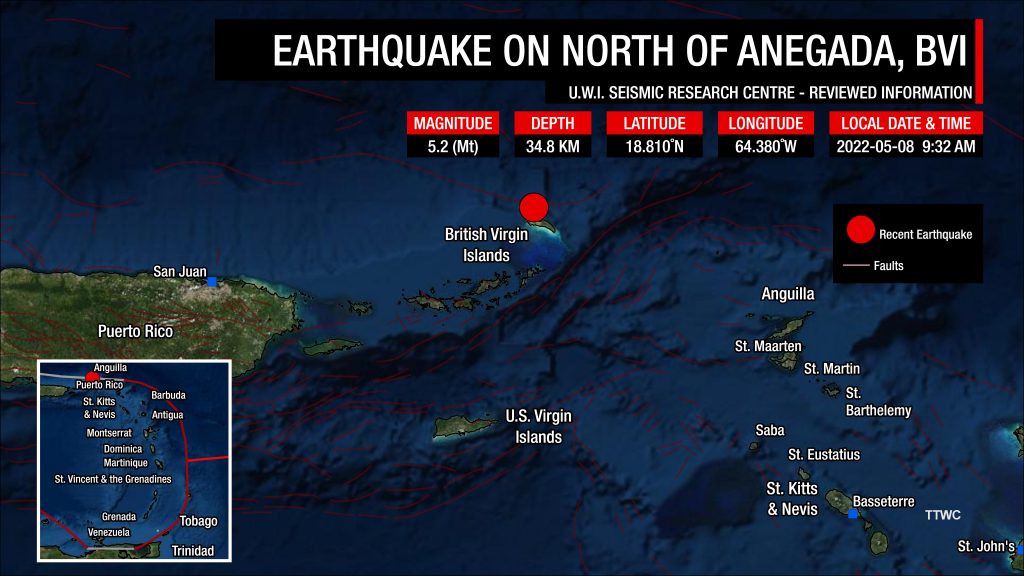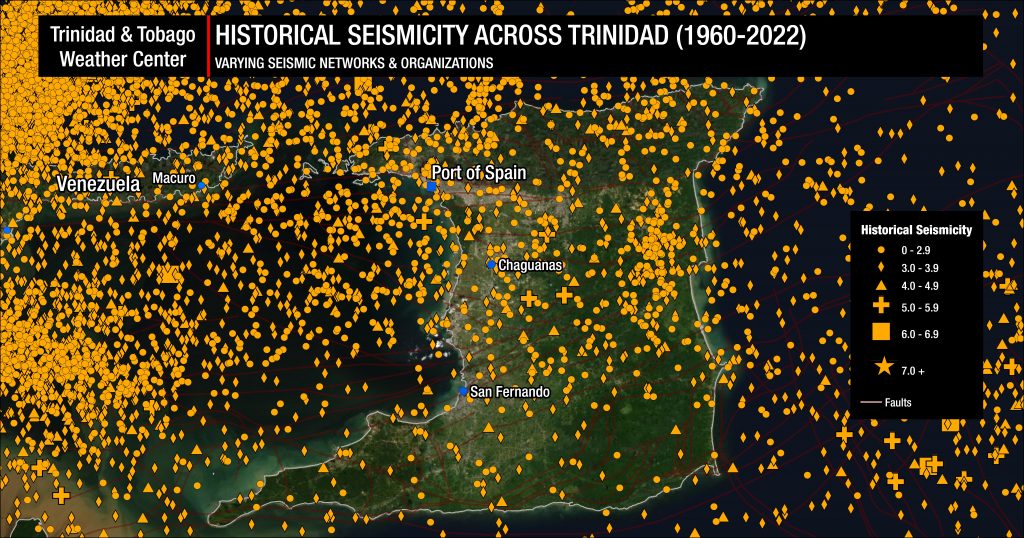Parts of the British Virgin Islands were jolted by a moderate magnitude 5.2 (mt) earthquake on Sunday morning. According to the University of the West Indies Seismic Research Centre (UWI SRC), the quake was recorded at 9:32 AM, Sunday, May 8th, 2022. It was located approximately 10 kilometers north of Anegada, British Virgin Islands, at 64.380°W and 18.810°N at a depth of 34.8 kilometers.

According to the United States Geological Survey, moderate shaking was reported felt across the British Virgin Islands as well as Culebra and Vieques, Puerto Rico. Light shaking was reported as far east as Antigua and Barbuda and as far west as mainland Puerto Rico.
There was no tsunami threat.
There are four conditions necessary for an earthquake to cause a tsunami:
- The earthquake must occur beneath the ocean or cause material to slide within or into the ocean.
- The earthquake must be strong, at least magnitude 6.5.
- The earthquake must rupture the Earth’s surface and it must occur at a shallow depth – less than 70 kilometers below the surface of the Earth.
- The earthquake must cause vertical movement of the seafloor (up to several meters).
None of these conditions occurred.
Note that different seismic monitoring agencies use different methods, or several methods, for processing quake parameters across the globe. Each method has its limitations and will likely produce different results within the range of the data’s uncertainty. This is generally accepted within the scientific community.
The United States Geological Survey recorded this event at a slightly larger magnitude of 5.5 (ml) at a shallower depth of 25 kilometers while being further north and west of the UWI SRC location.
Read More
Earthquake Magnitude & Intensity
Can earthquakes be predicted or forecasted?
Has there been an increase in seismic activity?

Trinidad and Tobago and the surrounding region are very seismically active. Across the Eastern Caribbean, over 2,200 earthquakes are recorded annually.
On average, the Eastern Caribbean has seen a pattern of major (M7.0-M7.9) quakes every 20 to 30 years. That pattern has stayed true. The last major (M7.0-7.9) quake occurred north of Martinique in 2007.
Historical patterns indicate that great quakes (M8.0+) on the Richter Scale have occurred every century in the region. The probability of another event at that level is high since the last >M8.0 earthquake occurred in 1843. While it is impossible to say definitively when the next great quake would occur in the region, the time since the last one is now more than 170 years ago.
It is important to note seismic activity *cannot* be predicted – meaning the precise time, date, magnitude, depth, etc., cannot be known ahead of time based on current research and technology.
Now is the time to create or go over your earthquake preparedness plan and know what to do during, before, and after an earthquake.












